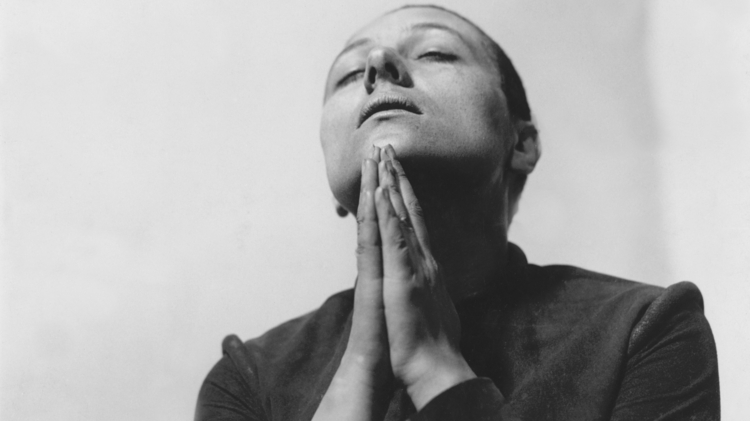
The Cinematic Fascination of the Face: The Passion of Joan of Arc
classifiedParental guidance
Please note: This event took place in May 2020
It sometimes seems so obvious that we can forget that the face is central to cinema’s meaning. It is through the face of the actor that we are further absorbed into drama, the romance, the comedy. Think of the exchange of looks between Adèle Haenel and Noémie Merlant in Portrait of a Lady on Fire as a prime example. However directors have taken different approaches to the expressiveness of the actor’s face reducing the emotion to reveal, as cultural philosopher Roland Barthes described of Greta Garbo, an idea rather than an event. Here's a programme of films for you this week that celebrate the cinematic fascination of the face.
Carl Dreyer's deeply moving biopic features one of the most desperate, brilliant performances ever captured in cinema’s history. Actress Renée Falconetti, as the 19 year old Joan condemned to death, was brutally forced by Dreyer to kneel on stone to show the pain on her face. Few films since have used close-ups as intensely and overwhelmingly.
The Passion of Joan of Arc remains an unassailable giant of early cinema, a transcendental film comprising tears, fire and madness that relies on extreme close-ups of the human face. Renée Falconetti was 35 when she played the role of Joan (a teenager when condemned to death in 1431). Dreyer brutally extracted a desperate, brilliant performance from the actress, forcing her to kneel on stone to show the pain on her face and insisting that they shot in silence. In the 2012 Sight and Sound poll, Joan had risen to no. 9. But in 2010 it was designated the most influential film of all time in the Toronto International Film Festival’s ‘Essential 100’ list, where Jonathan Rosenbaum described it as “the pinnacle of silent cinema – and perhaps of the cinema itself”.
Our Cinema Curator Mark Cosgrove says:
"Renée Falconetti gives one of the most intense performances in cinema as the interrogated Joan of Arc. That intensity is created through extreme close-ups of Falconetti’s beatific and pained face magnified by the grotesque faces of men cross-examining her."
